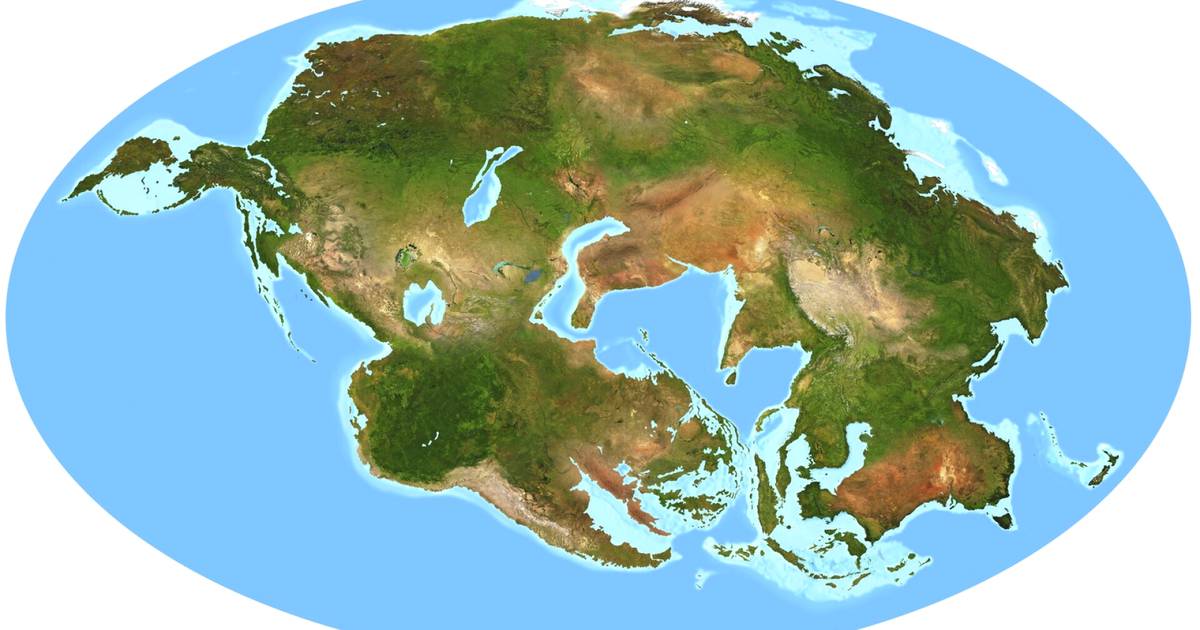The climate warming is the biggest crisis of our time, which threatens the life of the entire planet.
If we survive this, it will be even more miserable in the future. This is what is predicted in the journal Nature Geoscience researchwhich models the Earth’s climate very far into the future.
In a disaster looming far in the future, the main culprit is not man with his carbon dioxide emissions, but the internal movements of the planet.
The continents are constantly moving, and before long they will merge into a huge giant continent that scientists call a name Pangaia ultima.
“
“Life will have to be a little cramped in the future.”
Thus predicted to happen in about 250 million years.
On the future giant continent, the climate would be so warm as a result of volcanic activity, for example, that most mammals would probably become extinct.
“Yes, it looks like life will be a bit cramped in the future”, complains the geologist Hannah Davies In the journal Nature.
“Pretty depressing,” he adds.
250 million years is of course a very long time. The human mind can’t really see that far.
Something of a scale can be sought from the fact that 250 million years ago there were not even dinosaurs on Earth. Even then, the continents were together and formed a giant continent called Pangaea.
The Earth’s continents always drift together on average every 400-600 million years, until they slowly separate again.
In the new study by a palaeoclimatologist at the University of Bristol Alexander Farnsworth became interested in what kind of conditions would be needed so that mammals like today would no longer survive. A paleoclimatologist specializes in the study of ancient climates.
If the air warms up enough, even-tempered mammals are unable to cool themselves. There are already areas on Earth that are almost unlivable for humans due to the heat.
Farnsworth and his teams modeled the formation and possible climate of the future supercontinent. The supercontinent resulting from the combined effect of many factors is likely to be an unlivable desert inside. Temperatures there regularly rise above 40 degrees.
In addition, in 250 million years from now, the aging Sun will burn more slowly than it does now, radiating 2.5 percent more heat to the Earth than it does today.
When the continents slowly come together, a lot of volcanoes are born, which throw carbon dioxide into the air.
At the same time, in the interior of the dry continent, the chemical reactions between water and rocks slow down so that carbon dioxide does not bind to the soil minerals in the same way as before.
“
“There have been extinctions and there will be.”
In the worst in the view, this will result in the carbon dioxide concentration in the atmosphere rising to 1,120 parts per million by volume, almost three times the current level.
In this case, the Earth’s average temperature will also rise by almost ten degrees above the current level, and up to 92 percent of the planet’s land surface would be unlivable for mammals. This would lead to massive extinctions.
This has happened before. 250 million years ago, the Permian Mass Extinction occurred, in which most of the life on Earth was lost. Even then, the continents were together and the climate warmed strongly.
Continents may combine in the future in many ways. The pangaia ultima modeled in the study is just one of many scenarios. According to Farnsworth, other possible combinations of continents would probably be dreary places to live by today’s standards.
Farnsworth thinks that the Earth of the future would mostly resemble the sandy desert of the science fiction movie Dune.
If there’s one thing we can learn from the history of the planet, it’s that certain cycles repeat themselves.
“There have been and will be extinctions,” says Farnsworth.
#Earth #upheavals #Research #supercontinent #form #future #wipe #life #Earth









